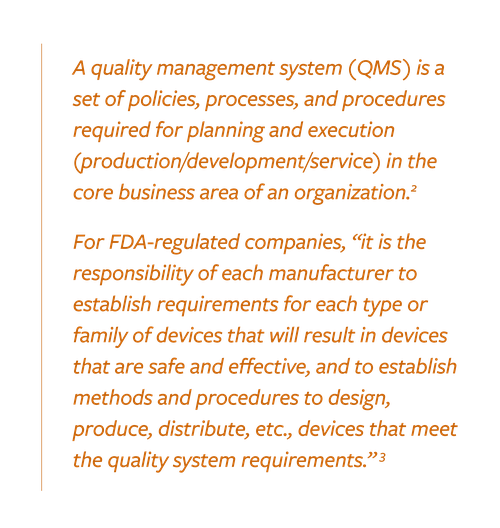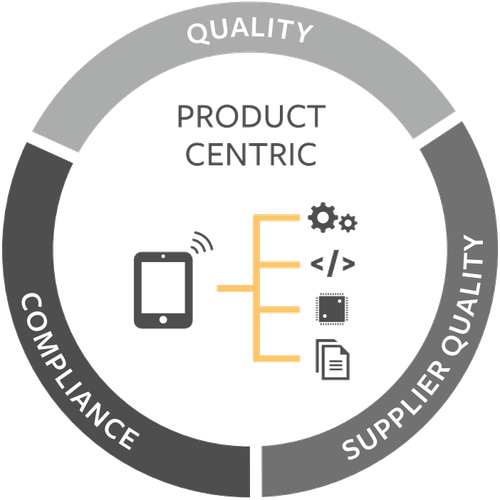What Kind of Quality Management System Do You Need?

Donuts, bowling balls, and tires. What do these things have in common? They’re all round and they all have holes. Sometimes holes serve a purpose. But when it comes to software, holes—or gaps—are not good.
Software should solve a problem, not just part of a problem. If you used tax return software but had to manage your W-2 details manually, you would increase your chances for mistakes and slow down the process of filing an accurate tax return. B2B enterprise software solutions are no different. When software vendors look to address business issues, it’s important they consider the gaps to address the entire problem.
The US Food and Drug Administration regulates life sciences companies to make sure gaps are avoided and side effects are minimized. When it comes to medications, you need to understand the benefits and possible side effects. How many times have you listened to an advertisement for a medication where the side effects sounded worse than the medical condition it was supposed to treat? Whenever I hear the medical disclaimers and side effects, I typically think to myself, “I’d rather risk the medical condition than the side effects.”
Quality Management systems have been around for many years to manage quality processes, documents, standard operation procedures (SOPs), and compliance information to help life sciences companies better adhere to FDA regulations. For pharmaceutical manufacturers, traditional document-based QMS systems work well enough. However, for medical device manufacturers that develop and sell complex products like MRI equipment or pacemakers, traditional QMS solutions have a large hole. That hole involves the inability to manage the entire product record and bill of materials (BOM) comprised of mechanical, electrical, and software components. 
Document-based QMS solutions attempt to manage BOMs without a relational, hierarchal system that can manage the complex product structure intelligently with linked drawings, specifications, SOPs, and other key documents. This brings me to current good manufacturing practice (CGMP) regulations by the FDA. CGMPs help assure proper design, monitoring, and control of manufacturing processes. Adherence to the CGMP regulations not only helps create safer drug products by requiring manufacturers to control their manufacturing operations, but it also provides guidance to establish strong quality management systems.1 Software solutions have been created to better manage QMS processes.
Product lifecycle management (PLM) systems excel at managing the complete, complex product record and relational BOM. They offer the necessary foundation that medical device manufacturers require to track, review, and approve products while minimizing quality issues. Without the BOM record foundation in a single system that manages quality processes, FDA-regulated companies are left with partial or disconnected solutions for documentation, training, compliance, and product record management.

Arena has worked with hundreds of global medical device manufacturers for well over a decade to manage their product record, BOM, and related new product development (NPD) processes. With our expanded production realization platform, we’ve added connected closed-loop CAPA, quality, training, requirements, and issue resolution processes to eliminate the need for separate solutions and costly system integrations.
So, if you want to know what type of QMS solution you need, read this article: Is Product-Centric QMS Right for Your Company?
References:
1 Facts About the Current Good Manufacturing Practices (CGMPs)
2 ISO 9001 Quality Management System
3 Quality System (QS) Regulation/Medical Device Good Manufacturing Practices


